The content of the article
Agree that it is incredibly pleasant to wake up in the morning and get up barefoot on the warm floor. Especially when it was snowing outside the window at that time. You go to make yourself a cup of coffee, sit in front of the window and look at the snow-white landscapes. Want also? Then read the article further and learn how to make a warm floor in your private home.
Kind of warm floors
If the floor heating system you have already purchased, skip this section and continue to the next one. The rest of the information written here will be useful. There are two main types of warm floors:
- Water;
- Electric
Both have their own advantages and disadvantages. Therefore, it is worthwhile to separately dwell on each of them.
Water floor heating
By name, you can guess that the floor is heated with water. Indeed, under the floor covering laid pipe, which circulates hot water.It is worth noting that for private homes, this system is a more popular electrical counterpart. However, let's look at why.
So, the advantages of a water floor over an electric analog and a conventional radiator are:
- Comfort. Water floor does not dry out the air at all, and heat is distributed evenly from floor to ceiling.
- Partial independence from electricity. In case of a sudden outage, the floor will continue to produce heat for another one or two days. Despite the fact that the circulation of water stops and the heating elements are turned off, the liquid cools for a very long time.
- Radiators are traumatic and can leave a serious burn. With the system of warm floors, it is absolutely impossible.
- Freedom of space. All heating components are under the flooring. Accordingly, the radiator can be sent to the trash (or in the closet, if you are too economical) and free up additional space.
- Compatible with other heaters. Merzlyak this item especially enjoy. It is possible to use a heat-insulated floor with other methods of heating. It should be noted that this also applies to electric floors.
An impressive list, isn't it? However, like everything that surrounds us, water-heated floor has its drawbacks that you should know by sight.
- Above it was said that the floors cool for a long time. However, there is a reverse side of the coin. They also heat up for a long time. To gain the optimum temperature, they will need at least one day. Accordingly, to install the system in a country house in which no one lives permanently, there is no point.
- The next drawback is a bit off topic. But if the article is read by apartment owners in a high-rise building, the following information is useful. So, to install a water floor in such housing is prohibited. This is due to the fact that this increases the level of hydraulic resistance.
- Difficult installation, in comparison with electronic analogs. More on this later.
- If a hole is formed in the heating tube, it is unlikely that it will be possible to identify the specific location. Therefore it is necessary to disassemble the entire floor covering.
After that, you can draw any conclusions. However, the final choice should be made after the description of electric floors.
Advantages and disadvantages of electric floors
In contrast to the above described system, electric underfloor heating has 3 types:
- Heating cable A simple system, but you need to install the coupler on top of it.
- Special mats. The same cable, only on a special grid. It is more expensive, but there is no need to carry out a complete repair and make the screed.
- Heating film (infrared heating). It is installed directly under the floor and consumes less electricity. However, in rooms with a large area, such a system is less effective.
Now consider the main advantages of such sexes:
- Such a heating system does not dry the air and creates a favorable microclimate even for people with lung disease.
- The room starts to heat up in a few minutes after switching on.
- Maintaining and changing the temperature is easy enough. For this there is a special thermostat. In the case of water floors, it is also present, however, to change the temperature it will take a much longer period of time than here.
Now the shortcomings, but rather the shortcoming. Yes, he is only one, but for some very weighty.It consists in increased power consumption. Per 1 sq.m. consumes about 110–150 watts. However, with the help of temperature regulators, this figure can be reduced to 70-100 watts.
Perhaps of these minuses - that's all. Of course, it can be noted that many talk about the harmful radiation from the heating mats. However, in reality this is not supported by anything.
So, the pros and cons of each system are disclosed. Now you can make a choice, go to the store and read the following sections.
Installation of a water floor
Chose a water floor? Perfectly. However, it is worth remembering that for its installation will need to make a concrete tie. Can I do it in a wooden house? Absolutely not. However, there is a way out and it will be described later.
Installation in a brick and concrete house
To begin, consider the classic version of the installation. So, before you lay the pipe, should be an additional series of measures.
- First, the main surface of the floor is leveled and cleaned of debris. Next, the coating is covered with a layer of waterproofing. To do this, fit a dense polyethylene, the seams of which are glued with double-sided tape.
- Probably everyone wants the system to have high heat transfer and go only upwards, that is, to heat the room. For this, a layer of thermal insulation is laid out on polyethylene (foil side up). For more convenient styling is recommended to focus on more rigid materials.
- Then around the perimeter of the room is attached to the damper tape. It will maximally save the future screed from squeezing during drying.
- After that, you can already begin to lay out the pipe. This should be done strictly according to the instructions, so that unexpected troubles do not arise in the future.
- Then follows the connection to the distributor. Before flooding with the coupler, the system must be checked for possible malfunctions and holes in the pipes.
- Finally, the final stage. The floor is poured with a concrete screed, carefully leveled and left to dry completely.
Installation in a wooden house
In principle, the differences are few. The main thing is that instead of a tie, special modular systems are used to which the pipes are attached. And on top there is a thin protective layer and the floor covering is laid out.
Electrical floor installation
The installation of this system is carried out after the final leveling of the base of the floor and its thorough cleaning from dust and debris. Further, everything is quite similar to the previous version. The base is covered with a layer of heat and waterproofing. Foam thickness of 5-10 cm with the addition of a heat-reflecting foil layer is perfect as thermal insulation.
After that, the heating elements are installed. In each type, the installation features are somewhat different, you can see them on the instructions attached to the product. Do not forget that it is desirable to install the system only in those parts of the room where there will be no furniture.
Then the reinforced screed is laid out, followed by glue for the tile. At the end of the flooring is mounted. Do not forget that from the cable to the wall you need to hold the thermostat. Cable warm floor is filled with cement screed and left for 30 days. Only a month later, you can start operating the system. However, you need to start with low temperatures, gradually raising it. If the film was chosen method of heating the floor, do without the screed. Finishing flooring is installed directly on the heating elements.
To warm the floor and the house as a whole, in several ways. Which one to choose, you decide. Based on the pros and cons of each of them, you will surely make the right choice. And based on the instructions for the product and this article, the floor will be laid correctly and will last for many years.
Video: warm floor - the pros and cons

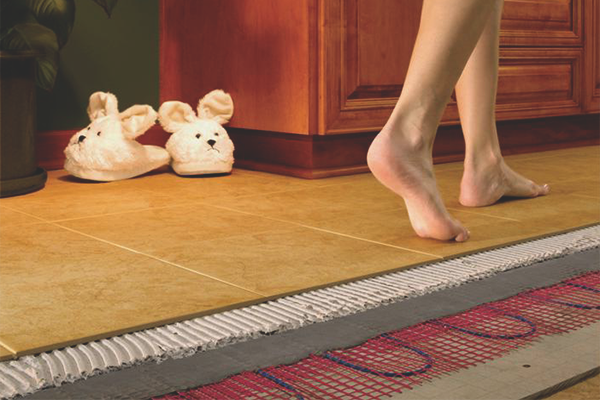
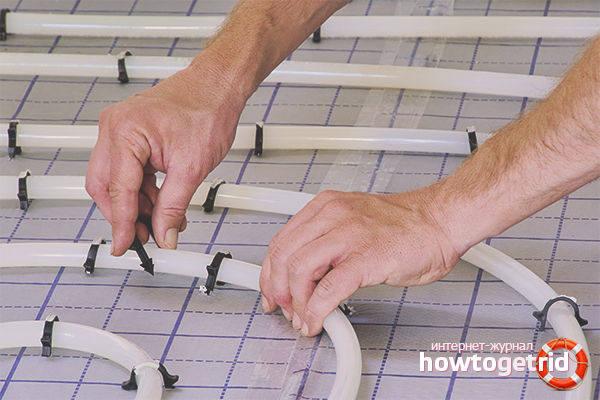

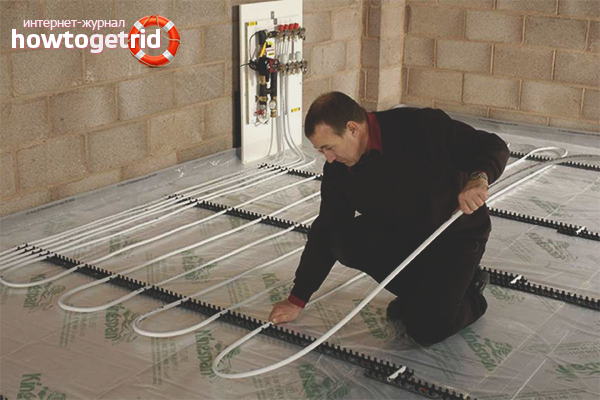
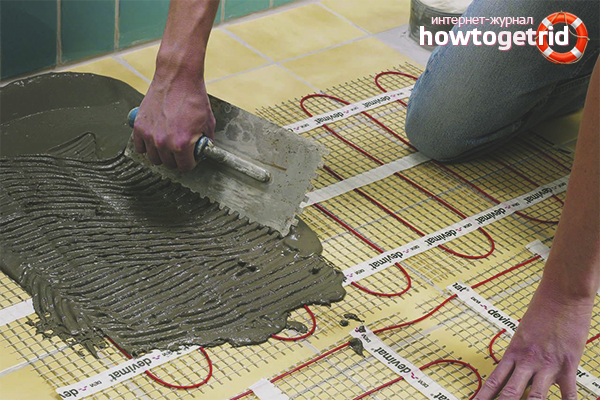






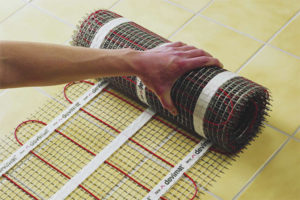


To send